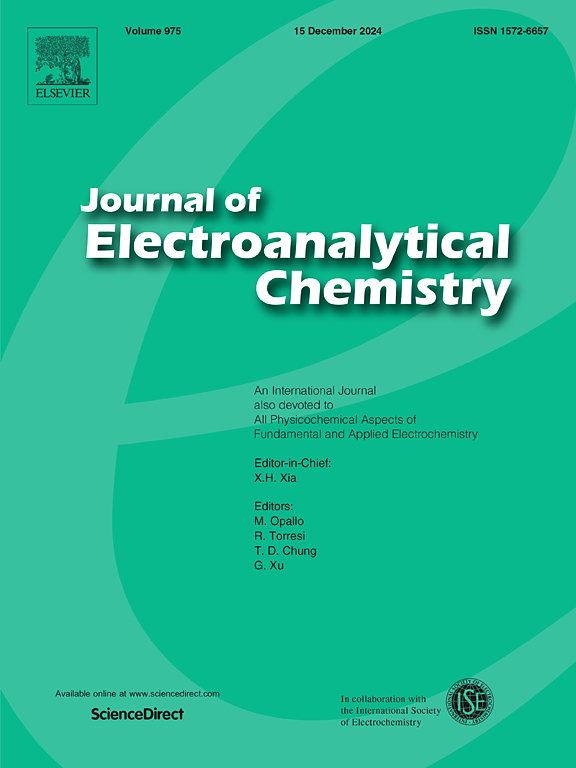Copper-triggered adjacent S sites activating for enhancing the hydrogen evolution reaction in acid media
IF 4.1
3区 化学
Q1 CHEMISTRY, ANALYTICAL
引用次数: 0
Abstract
Activating the inert basal plane of MoS2 is considered to be an efficient strategy to enhance the HER activity of MoS2. Herein, the adjacent S sites in the basal plane were activated by doping cu into MoS2 nanosheets (cu-MoS2). The density functional theory (DFT) calculation and experimental results show that the electronic structure of S sites adjacent to cu was adjusted. Furthermore, the ∆GH* of adjacent S sites around cu in the basal plane is closer to zero, indicating that the adsorption of H on MoS2 was also optimized. Benefiting from the activation of adjacent S sites around cu in the basal plane, the obtained cu-MoS2 nanosheets exhibit a small overpotential of 172 mV to achieve 10 mA cm−2 in acid media with a low Tafel slope of 49 mV decade−1. This strategy, which involves doping-triggered activation of adjacent inert active sites, can be expanded to other two-dimensional materials for boosting electrocatalytic activity
铜触发邻近S位点激活,促进酸性介质中析氢反应
激活MoS2的惰性基面被认为是提高MoS2 HER活性的有效策略。通过在MoS2纳米片(cu-MoS2)中掺杂cu,激活了基面上相邻的S位点。密度泛函理论(DFT)计算和实验结果表明,铜邻近S位的电子结构发生了调整。此外,基面上cu周围相邻S位的∆GH*更接近于零,说明氢在MoS2上的吸附也得到了优化。得益于基面上cu周围相邻S位点的活化,所获得的cu- mos2纳米片在酸性介质中表现出172 mV的过电位,达到10 mA cm - 2, Tafel斜率低至49 mV decade - 1。该策略涉及兴奋剂触发相邻惰性活性位点的激活,可以扩展到其他二维材料以提高电催化活性
本文章由计算机程序翻译,如有差异,请以英文原文为准。
求助全文
约1分钟内获得全文
求助全文
来源期刊
CiteScore
7.80
自引率
6.70%
发文量
912
审稿时长
2.4 months
期刊介绍:
The Journal of Electroanalytical Chemistry is the foremost international journal devoted to the interdisciplinary subject of electrochemistry in all its aspects, theoretical as well as applied.
Electrochemistry is a wide ranging area that is in a state of continuous evolution. Rather than compiling a long list of topics covered by the Journal, the editors would like to draw particular attention to the key issues of novelty, topicality and quality. Papers should present new and interesting electrochemical science in a way that is accessible to the reader. The presentation and discussion should be at a level that is consistent with the international status of the Journal. Reports describing the application of well-established techniques to problems that are essentially technical will not be accepted. Similarly, papers that report observations but fail to provide adequate interpretation will be rejected by the Editors. Papers dealing with technical electrochemistry should be submitted to other specialist journals unless the authors can show that their work provides substantially new insights into electrochemical processes.

 求助内容:
求助内容: 应助结果提醒方式:
应助结果提醒方式:


